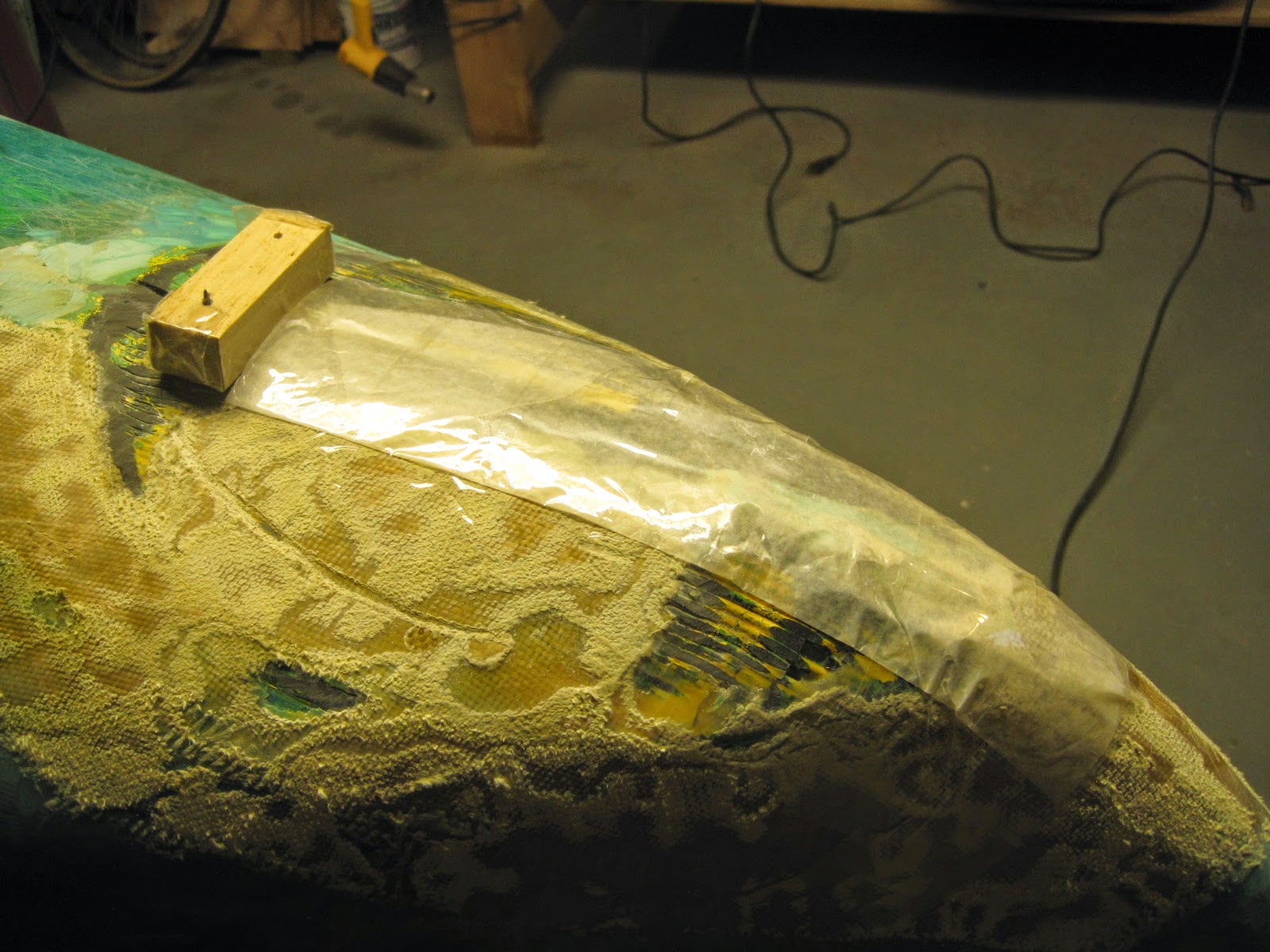| I mixed a batch of the filled epoxy but quickly realized that even that was a little too runny for the large gap in the stern, so I added a heaping tablespoon of colloidal silica. It was hard to mix the light, fluffy filler into the stiff paste, but after a lot of stirring, I was able to achieve the consistency of peanut butter. This served nicely when applied with a plastic spreader, and the waxed paper on the outside sufficed to keep it from falling through. Notice the screw heads holding the cleat on the outside of the hull: I tried to avoid getting epoxy on them, to make them easier to remove. |










No comments:
Post a Comment